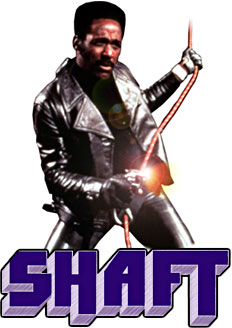I have now received feedback on what I have written so for my Research Report. The good news is that I appear to be heading in the right direction with what I have done so far. The comparisons to fairytale in Django seems to be a strong area in which to begin my essay.
One of my points which I have made change to since the feedback regards the flamboyant blue suit Django wears in the scene where he is whipping the slaver. I remembered reading about how this suit was featured in a famous painting "The blue boy".


I wanted to look at the subject of the painting as a way of exploring how further storytelling was emerging from the costumes used however research since has shown that there is mixed opinion on the identity of the character in the painting therefore I could not use it to support this argument effectively. In my feedback however we discussed the almost pantomime nature of the costume, and the fact that it is his choice to wear this garment. I am tying this in with the previous points in my essay comparing the deliberate humour of his costume choice to the extreme graphical violence.
These types of contrasts are something I am looking at a lot in the form of Levi Straus's binary opposition. Particularly when flashback scenes are being used to contrast with the present situation.
Whilst it is too old to have any reflection on Django, I have borrowed a book on Tarantino from the library "King Pulp".

This is useful for helping me to write my intro and plan some of the other chapters in my research report. I decided first that it was important to jot down the ideas for my other chapters so I could effectively build up to it within the intro. Most of my ideas for the other chapters have been influenced by the reading I have done when trying to find the initial direction for my essay.
Chapter 2- Controversy
Controversy is often existent in Tarantino's work, usually due to violence or profanity. In a film like Django where huge focus is upon racial prejudice, we have the holy trinity of potentially offensive material. As such when researching the film it was easy to find many examples of complaint against these elements within the film. A strong example can be found here
http://newsone.com/2150768/jamie-foxx-spike-lee/ where director Spike Lee speaks out against the film. rather than just identifying this kind of controversy I will be examining its relationship to the previous chapter and the reasons it has been included/effect it has had. I strongly suspect that, relating to the childish innocence/ extreme violence opposition uncovered in the fairytale chapter, these more "controversial" scenes make these contrasts that much more shocking to the audience- a pretty appropriate response when trying to convey the horror of the slave trade in this particular time period.
Chapter 3- Genre Relationships
Tarantino places a huge amount of value in the history of cinema, with frequent references to previous films. In this chapter I will be dissecting other Western related media I believe may have inspired some areas of Django. Linking into chapter 2s discussion on controversy I will discuss how this was also a relevant feature within Red Dead Redemption, and how this can accompany publicity and marketing. Another important element of Django is humour. After my feedback session I was advised to look at the film blazing Saddles and compare some of the similarities between the two. Once again I will be identifying where Django may have been inspired by these other medias but also why this is important and what kind of effect it has.
Chapter 4-Blaxploitation
Whilst my studio work and my research report don't really hold much relevance to each other, save for my film based essay and the lead inspiration game for my studio work being Max Payne, a particularly cinematic game. Howevever this is probably the only other area they cross over. Like with my cross culture examination of Afro Samurai for studio, Blaxploitation is also relevant in Django. Tarantino has stated that he is a fan of the genre and that it has been the inspiration for previous character such as "Jules Winnfield" in Pulp fiction. My book "King Pulp" has been useful in supporting these statements within my essay. This kind of influence defininitely contributes to the aesthetics and style of a character, so for now I am looking at how making Django as "cool" or iconic a character as "Jules" or Issac Haye's "Shaft", Tarantino has created a character the audience admire and engage with. This I will argue makes his trials much more important and meaningful to us.


I will make sure that my intro builds up to all of these in some way by mentioning Tarantino's frequent dabbling with Blaxploitation and controversy.

I have also got hold of the copies of "Empire" and "Toatal Film" Magazine from when Django came out. Having given these a brief look I am not sure just how useful they will be for the completion of my first chapter on fairytale however I am sure they will come into play when it is time to complete my report in BA8
Below are some of the references I have made use of for this stage of my essay
Woods,
P.A, 1996. King
Pulp: The Wild World of Quentin Tarantino.
1st ed. London: Plexus Publishing.











 The guide then states that dominant directional lighting is generally used to depict sunlight in an environment, whereas point lights are used for light sources in interiors. As my 3D scene is a completely internal environment I guess this means that point lighting will be of greater use to me.
The guide then states that dominant directional lighting is generally used to depict sunlight in an environment, whereas point lights are used for light sources in interiors. As my 3D scene is a completely internal environment I guess this means that point lighting will be of greater use to me.





 This is useful for helping me to write my intro and plan some of the other chapters in my research report. I decided first that it was important to jot down the ideas for my other chapters so I could effectively build up to it within the intro. Most of my ideas for the other chapters have been influenced by the reading I have done when trying to find the initial direction for my essay.
This is useful for helping me to write my intro and plan some of the other chapters in my research report. I decided first that it was important to jot down the ideas for my other chapters so I could effectively build up to it within the intro. Most of my ideas for the other chapters have been influenced by the reading I have done when trying to find the initial direction for my essay.








